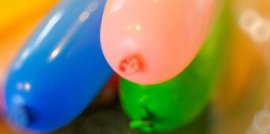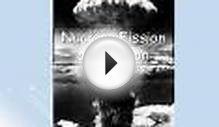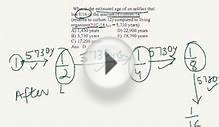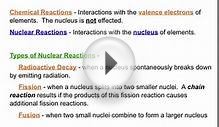
Description:With the Fission Demonstration, students gain a better understanding of nuclear fission and fusion. Students are able to visualize and model what is meant by nuclear fission. By extension, this experiment is a useful analogy to the generation of electricity via nuclear reactors. This experiment is best performed by students working in groups.

Grade Level:
5-10
Disciplinary Core Ideas (DCI, NGSS)
5-PS1-1, 5-PS1-3, 5-ESS3-1, 3-5 ETS1-1, MS-PS1-4, MSPS1-5, MS-PS3-1, MS-PS3-2, MS-PS3-4, MS-PS3-5, HSPS1-1, HS-PS1-8
Time for Teacher Preparation
30-60 minutes – To gather materials and set-up
Activity Time:
30-60 minutes (1 Class Period)
Materials
Safety
- Student should use care when handling scissors
Science and Engineering Practices (NGSS)
- Ask questions and define problems
- Use models
- Plan and carry out investigation
- Analyze and interpret data
- Construct explanations
- Argue from Evidence
- Obtain, evaluate and communicate information
Cross Cutting Concepts (NGSS)
- Patterns
- Cause and Effect
- Scale, Proportion, and Quantity
- Systems and System Models
- Energy and Matter: Flows, Cycles, and Conservation
- Stability and Change of Systems
Objective
Learn the concepts of nuclear fission and fusion and investigate how these reactions are used to generate energy.
Background
Fission is the release of energy by splitting heavy nuclei such as uranium-235 and plutonium-239. Each fission releases 2 or 3 neutrons. These neutrons are slowed down with a moderator, so they can initiate more fission events. Control rods absorb neutrons to keep the chain reaction in check. These fast-moving fission fragments are knocked into a water molecule, which causes the water molecules to move a little bit faster. This increased amount of motion is measured as an increase in temperature. The energy from the reaction drives a steam cycle to produce electricity. Nuclear power produces no greenhouse gas emissions; each year U.S. nuclear plants prevent atmospheric emissions totaling:
- 5.1 million tons of sulfur dioxide
- 2.4 million tons of nitrogen oxide
- 164 million tons of carbon
Fusion is the opposite of fission. Fusion is the release of energy by combining two light nuclei such as deuterium and tritium.
The goal of fusion research is to confine fusion ions at high enough temperatures and pressures, and for a long enough time,
to fuse. There are two main confinement approaches:
- Magnetic confinement uses strong magnetic fields to confine the plasma.
- Inertial confinement uses powerful lasers or ion beams to compress a pellet of fusion fuel to the right temperatures and pressures.
Teacher Lesson Plan:
Traditional
This experiment can be performed as either a demonstration or by the students themselves. Regardless, the procedure remains
the same. Explain that the balloon is like a heavy nucleus, such as uranium-235 or plutonium-239. Once they have twisted the
balloon into two sections, cut the twisted section to cause the “nuclei” to undergo fission. When the two smaller balloons are released, explain that the balloons flying off represent the energy given off by the reaction and how these fragments knock
water molecules, speeding them up, and thus increasing their temperature. Afterwards, collect the balloon fragments to throw
away and explain that nuclear waste needs to be disposed of properly and not dumped into the environment (just as you would
not leave pieces of balloons lying around the classroom).
NGSS Guided Inquiry
Split students into small groups and give each group a balloon. Have students design an experiment to model nuclear fission
with the balloon acting as a heavy nucleus, such as uranium-235 or plutonium-239. Have each group discuss ways to dispose of
the waste products.
Student Procedure
The students should draw the results that they observe onto the Student Data Collection Sheet that are provided.
- Blow up the twisting balloon and tie off the end.
- Twist the balloon in the center, creating two separate, but equal sections.
- While holding both ends of each inflated section, have a partner cut the twisted portion of the balloon in the middle.
- Hold onto the ends of both of the resulting smaller balloons.
- Release the balloons allowing them to fly off.
- Collect the balloon fragments to throw away.
Data Collection
Student Data Collection Sheets
Post Discussion/Effective Teaching Strategies
Questions
- How was this activity similar to nuclear fission?
- What would need to happen to model nuclear fusion?
- Why is it important to dispose of radioactive waste properly?
Assessment Ideas
- Question the student as to the similarities and differences of nuclear fission and fusion.
Differentiated Learning/Enrichment
- Have students model fusion
- Have students research contamination by waste products of fission.
Enrichment Questions
- How could fission be used to generate electricity in a nuclear power plant?
- Instead of scissors, what is actually used to make an atom undergo fission?
Further Resources
Citations for Reference
Adapted from Easy to Perform Classroom Experiments in Nuclear Science. (1992), BROMM, B, American Nuclear Society.
YOU MIGHT ALSO LIKE












